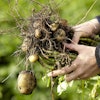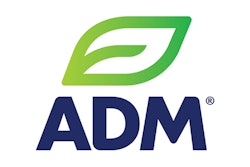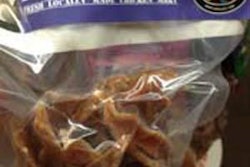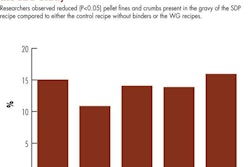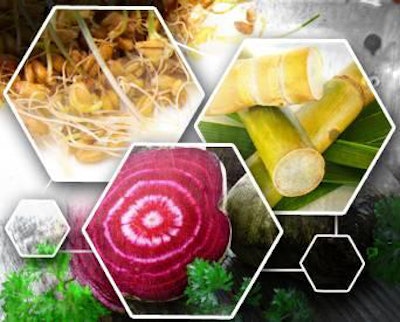
Research has long shown the positive effects of fiber in petfood. Dental disease in dogs, hairball symptoms in cats, obesity and diabetes in both-these and other negative health issues have been shown to be mitigated with diets that include fiber, and the petfood industry is more than happy to cater to the needs of those diets.
Companies in the industry  are staying on top of the latest trends to ensure pets get all the nutrition they need to be healthy and happy. "The most common types of fiber ingredients in petfood are those that have proven to be an effective source of fiber for pets, such as oat fiber, beet pulp, tomato pomace and fruit/vegetable fiber (apple, carrot, cranberry, pomegranate, etc.)," said Brian Immel, marketing specialist for LaBudde Group Inc.  "Beet pulp, which is known for being a 'super fiber', is one of the most common fiber ingredients and is also very cost effective for petfood manufacturers."
Whole foods are also finding a presence in many petfoods which are where an ingredient such as edible beans is attractive, according to Jolene Hoke, M.S., companion animal technical sales specialist for ADM Alliance Nutrition Inc. "They provide total dietary fiber at 22%-24% on a dry matter basis with about 6% being soluble fiber," said Hoke. "Consumers are able to easily identify with the ingredient and the health benefits of beans."
Pet industry trends  are looking to support consumers' desires to keep their pets alive, healthy and part of the family for as long as possible. "Pet owners have elevated the pet as part of the family," said Patrick Luchsinger, marketing manager, nutrition, for Ingredion Incorporated. "In this trend, there has been an ongoing development focusing on utilizing healthy ingredients that are typically used in human food for better nutritional balance (e.g., prebiotic fibers, probiotics, omega-3s, CLA, etc.) that can also bring better nutritional balance for the pet."
Fiber fits well into this desire, according to experts. "One trend we're seeing is an elevated interest in dried fruit/vegetable fiber-those ingredients are label friendly and are an excellent source of fiber for pets," said Immel. "There is also a definite shift towards ingredients with full traceability, which is why premium and high-quality ingredients have become so important in the pet food industry."
Pet owners are looking for ways to keep their pets feeling fuller longer in an attempt to target the obesity epidemic, and fiber is one of the ways to achieve satiety. "Fiber has long been associated with digestive health and fecal regularity," said Hoke. "As pet parents become more educated about obesity and colonic health, we will begin to see more fiber added to pet foods."
The future of the industry seems to point to a solid outlook for fiber in petfood, especially as consumers become more educated as to its benefits. "Fiber has always been a key nutrient in petfood, but not always respected for the contributions it makes to the digestive system's health," said Hoke. "It is well reported that short chain fatty acid production by hind gut bacteria fed by fermentable fibrous substrates can have positive health implications to the animal, in this case the pet."
The future of fiber in the petfood industry has and will probably continue to follow human dietary and consumption trends with the apparent benefit to the health of the pet, according to Immel. "These trends play a significant role in how products are formulated and labelled-something we don't foresee changing any time in the near future," he said. "High-quality fiber ingredients with full traceability such as oat fiber beet pulp, tomato pomace and fruit/vegetable fiber will continue to play an important role in the future of fiber in the petfood industry."
Hoke also said she believes trends in human food will lead the way for petfood. "As a society, many are learning that fiber is a key nutrient to consider as we evaluate our diet to become a less obese nation," she said. "Fibers from whole foods, such as beans, are a great solution to meeting the upcoming demand of the pet owner."
Overall, said Luchsinger, "in the next couple of years, we expect a growing preference for healthier choices in petfood and treats for dogs and cats. We believe there will be simplified ingredient statements and formulations utilizing healthier ingredients like prebiotic fibers, omega-3s, probiotics and CLA." Addressing specific health needs for pets is going to be key, and something fiber is sure to have a key part in.


